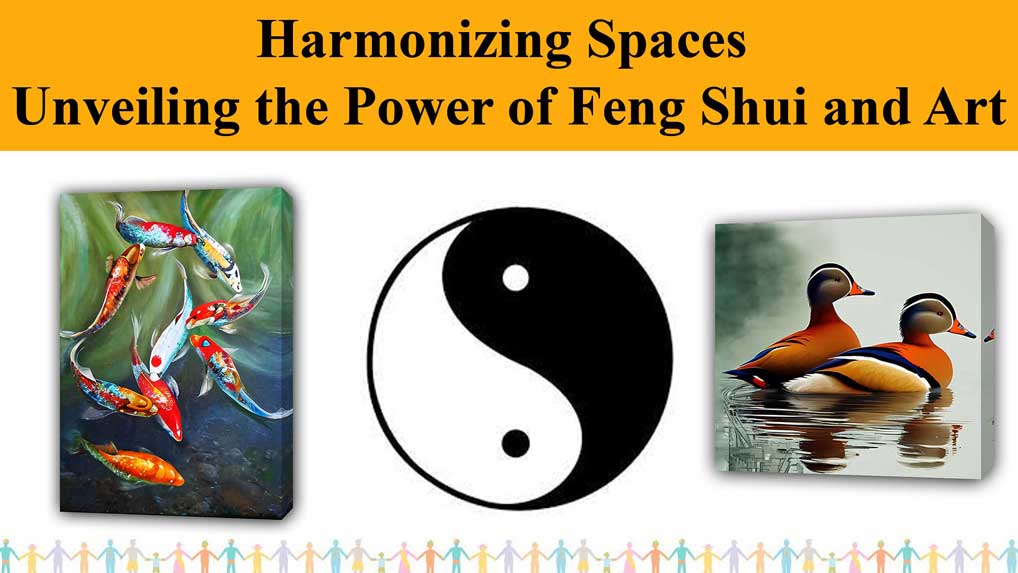
Harmonizing Spaces: Unveiling the Power of Feng Shui and Art
In the pursuit of creating a balanced and harmonious living or working environment, many turn to the ancient Chinese practice of Feng Shui. This centuries-old philosophy emphasizes the flow of energy, or "chi," to promote well-being, prosperity, and overall positive vibes. In this blog post, we'll explore the fascinating intersection of Feng Shui and the transformative power of art in shaping and enhancing our spaces.
Feng Shui: The Art of Energy Flow
Understanding the Basics
Feng Shui is not just about arranging furniture or adding elements to a room—it's about creating a dynamic flow of energy that aligns with the natural forces of the universe. The five elements (wood, fire, earth, metal, and water) and the Bagua map play key roles in understanding and applying Feng Shui principles.
Balancing Yin and Yang
Central to Feng Shui is the concept of Yin and Yang—opposite forces that complement and interact with each other. Achieving balance in these energies is crucial for a harmonious living or working space.
The Transformative Power of Art
Art as a Reflection of Energy
Art has the incredible ability to evoke emotions, inspire creativity, and influence the energy of a space. Understanding the symbolism and energy associated with different art forms allows individuals to curate a harmonious environment that resonates with their intentions.
Choosing Art with Intention
Explore how specific colors, shapes, and themes in art can be strategically chosen to enhance the energy of different areas in your space. Learn how to align your artistic choices with the Bagua map to promote balance and positive chi.
Practical Tips for Incorporating Feng Shui and Art
1. Identify Key Areas: Use the Bagua map to determine the different areas of your home or office, each corresponding to a specific aspect of life (wealth, health, relationships, etc.).
2. Integrate the Five Elements: Incorporate artwork that represents the five elements to create a harmonious balance and flow of energy throughout your space.
3. Consider Color Psychology: Explore the psychological effects of colors and select artwork that complements the desired energy for each area.
4. Placement Matters: Understand the importance of where you place your art. Strategic placement can enhance the energy flow and create a positive atmosphere.
5. Personalize Your Space: Infuse your personality into your space with art that holds personal meaning and significance, creating a unique and uplifting environment.
Conclusion
In the fusion of Feng Shui and the power of art, we find a dynamic approach to creating spaces that not only look aesthetically pleasing but also resonate with positive energy. Whether you're seeking tranquility, prosperity, or creativity, the art you choose and how you arrange it can be a powerful tool in cultivating a harmonious and vibrant environment. Embrace the transformative potential of Feng Shui and art, and embark on a journey to craft spaces that nurture your well-being and inspire your daily life.
Q: How does Feng Shui contribute to the overall energy flow in a living or working space?
A: Feng Shui is based on the principles of creating a balanced and harmonious flow of energy, known as "chi." By understanding and applying concepts like the Bagua map and the five elements, individuals can strategically arrange their environments to align with the natural forces of the universe, promoting positive vibes and well-being.
Q: How can art be a powerful tool in enhancing the energy of a space according to Feng Shui?
A: Art has the ability to influence emotions and create specific energies within a space. By choosing artwork with intention, considering color psychology, and aligning with the principles of Feng Shui, individuals can use art to reflect and amplify the desired energy in different areas of their homes or offices.
Q: What role does the concept of Yin and Yang play in the practice of Feng Shui?
A: Yin and Yang are central to Feng Shui, representing opposing forces that complement and interact with each other

Comments : (0)